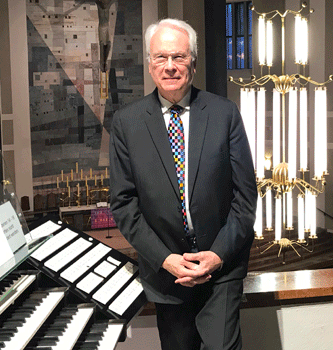
Stephen Hamilton recently completed his tenth European tour, March 24 to April 17, with concerts at St. Matthäus Lutheran Church, Munich, Germany; Saint Paul within the Walls, Rome, Italy; St. Giles Cathedral, Edinburgh, Scotland; St. Andrew’s University, Scotland; Crail Parish Church, Crail-Fife, Scotland; the Cathedral and the University of Glasgow, Scotland.
The three concerts in Munich, Crail-Fife, and the University of Scotland were general repertoire programs, and the other events featured Marcel Dupré’s Le Chemin de la Croix.
For information: www.stephenjonhamilton.com.

